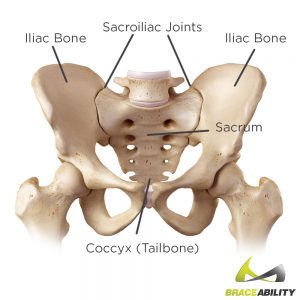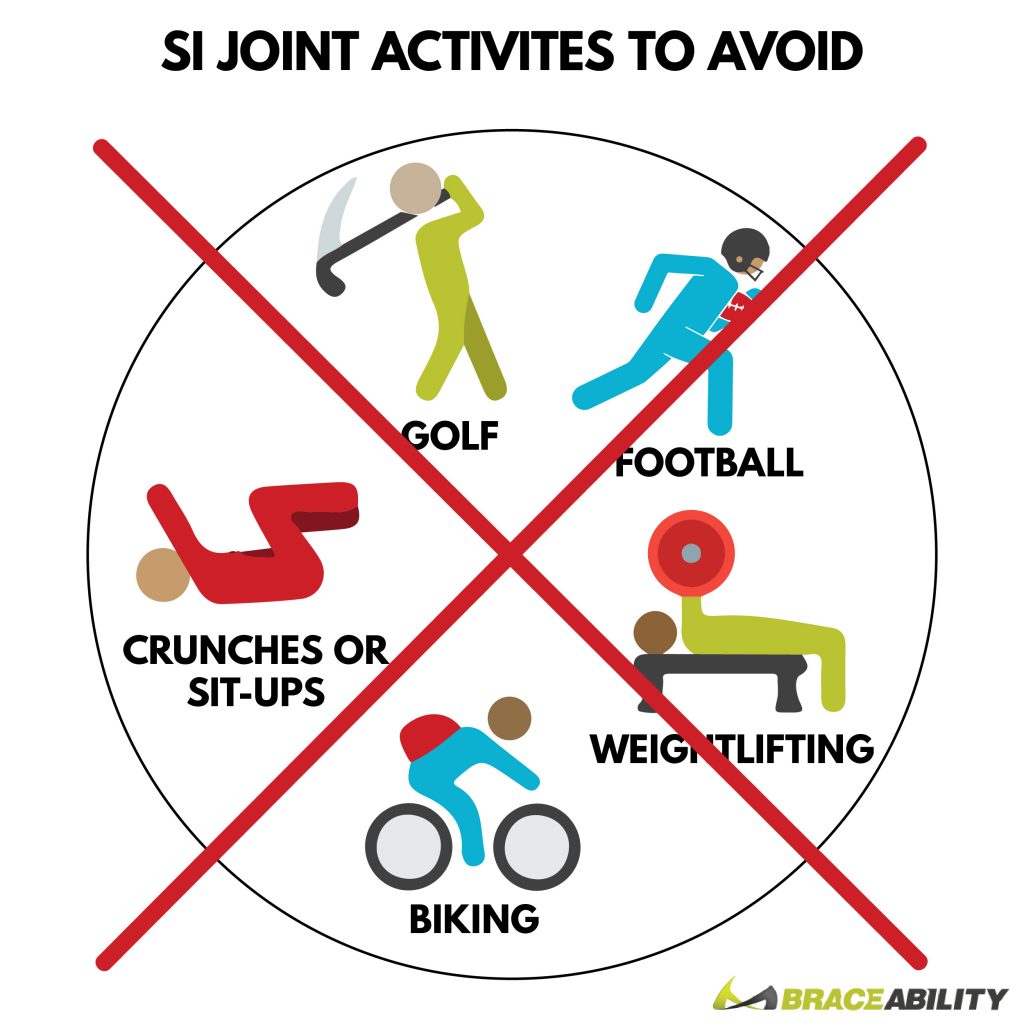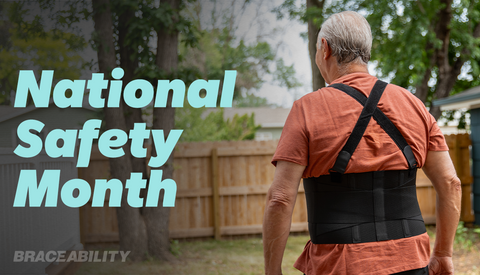Sacroiliac Joint Dysfunction (SI Joint Pain)
What Is the Sacroiliac Joint?
 Each of you has two sacroiliac joints located at the bottom of your spine (lying just above your tailbone). These joints connect the two iliac bones to the sacrum. The sacrum is a triangle-shaped bone near the bottom of the spine. Unlike most of the spine, this bone is immobile and is formed of five fused vertebrae. The iliac bones form the pelvis, thus, the SI joint essentially connects the pelvis to the spine.
Each of you has two sacroiliac joints located at the bottom of your spine (lying just above your tailbone). These joints connect the two iliac bones to the sacrum. The sacrum is a triangle-shaped bone near the bottom of the spine. Unlike most of the spine, this bone is immobile and is formed of five fused vertebrae. The iliac bones form the pelvis, thus, the SI joint essentially connects the pelvis to the spine.
You may be unaware of how vital these joints are in regards to your everyday movements. The sacroiliac joints function as shock absorbers for your spine and help you balance and stabilize your body as you move about. These joints are relatively immobile as they only allow for rotation of just four degrees. This level of immobilization helps to support and relieve the stress that is placed on your hips and spine. It also helps prevent all of your weight being placed on your spine, instead, moving this weight to your hips and pelvis.
Now you might be thinking... How do these two single joints possibly hold up all of my upper body weight without being stressed? Well, unfortunately, these joints do endure a lot of tension, therefore leading to pain and discomfort - aka sacroiliac joint dysfunction.
Is Sacroiliitis & Sacroiliac Joint Dysfunction the Same Thing?
To no surprise, sacroiliitis and sacroiliac joint dysfunction are two commonly confused conditions both regarding the s1 joints. Although they sound very similar and some individuals tend to use these two terms interchangeably, they are different.
In the name sacroiliitis, “itis” just refers to the inflammation in your sacroiliac joint. Simple right? Well basically, if you have sacroiliitis your joints are just inflamed or irritated. Some underlying causes of this condition are degenerative arthritis in your spine, injury, or trauma. Sacroiliitis can also be a symptom of a different condition such as ankylosing spondylitis, which is a form of arthritis that may eventually lead to the fusion of your vertebrates together.
Now sacroiliac joint dysfunction is a different story and this is where it gets more confusing. This condition is a result of too much movement or too little movement in your si joints. Si joint dysfunction can be a result of two things, from being unstable or stiff. Basically, this just means they’re either moving too much or too little. Sacroiliac joint dysfunction may result in your si joints becoming inflamed - leading to sacroiliitis.
Confused? Continue reading and we can help you decode sacroiliac joint dysfunction a little bit more!
SI Joint Dysfunction Symptoms
The most common symptom of SI joint disease is lower back pain. In addition to SI back pain, the following can also be tied to SI dysfunction:
- Pain at the back of the hips
- Groin or thigh pain
- Difficulty sleeping
- Balance issues
- Stiffness, burning sensation in the pelvis
Sacroiliac joint inflammation may be worse or more intense when you stand after sitting or when climbing stairs. In addition, it's usual for this the pain to be more intense in the morning. Sacroiliac pain is generally isolated to one side (e.g., right SI joint pain), but it can occur bilaterally.
It should be noted that some symptoms of si joint dysfunction could tend to look very similar to other lower back conditions such as herniated discs or pinched nerves.
What Causes SI Joint Pain in My Back?
SI joint pain can stem from a variety of causes. As previously alluded to, the SI joint takes on a lot of pressure because it supports your entire upper body weight when you’re upright, not to mention it helps to absorb shock to the spine.
For that reason, it is not surprising that chronic SI joint pain is often due to the cartilage erosion that occurs as you age. When the cartilage in the sacroiliac joint wears down, the bones rub against one another, causing pain. This happening is known as degenerative arthritis.
Indeed, any abnormality to your gait (the way you walk) can result in sacroiliac joint pain, whether this is due to uneven leg lengths, or pain in your hips, knees, feet, etc., or some other disorder.
There are also a number of conditions that in and of themselves cause inflammation of the SI joints and thus pain, including:
- Gout
- Rheumatoid arthritis
- Psoriasis
- Ankylosing spondylitis
And finally, injury to the region, such as falling onto your bottom on the ice, can cause SI joints pain.
Read more about the symptoms and causes of si joint groin pain.
I’m Pregnant, Why Am I More Prone to SI Joint Pain?
Pregnancy is actually the leading cause of sacroiliac joint dysfunction. When a woman is pregnant, they go through numerous hormonal changes in their body. This is because of hormone changes during pregnancy that cause the connective tissues to relax. Thus, the relaxed ligaments holding the SI joints together allow for more joint movement. As mentioned earlier, these joints are not supposed to be able to move much, leading to strains in the joint causing si joint pain pregnancy.
This, then, is compounded by the excess weight pregnant woman carries and the abnormal “waddle” the woman might assume.
If you’re suffering from si joint pain caused by your pregnancy, read this blog on 13 different ways to help deal with your pain caused by si joint dysfunction.
SI Disease Treatment
Anesthetic & Steroid Injection:
A method that is common both for diagnosis and treatment of sacroiliac joint pain is an injection of an anesthetic and steroid into the SI joint to ease pain and inflammation. The problem with this method is that it does not address the underlying cause to keep it from reoccurring. In addition, the resulting pain relief is temporary, with the duration of the pain relief varying from person to person.
Manipulations:
These manipulations are typically performed by your chiropractor to help if your si joints are stuck, also referred to as moving too little. There are usually two options that are most beneficial in treating your pain caused by si joint dysfunction: spinal manipulation and spinal mobilization. Both of these procedures help to release the buildup that causes your si joint to become fixated.
Ice & Heat Therapy:
Typically the first step of treating your pain from si joint dysfunction is applying heat and ice to your pelvic region. Applying cold will help lower the amount of swelling in your si joints and applying heat will help increase the blood flow to your joints. Try using this ice and hot wrap to easily apply this therapy to your back and spine.
Anti-Inflammatory Medications:
Taking anti-inflammatory medications is typically the first step for treatment for sacroiliac pain. These help by reducing the amount of swelling in your joints, which may be the root of your discomfort.
Correcting an Abnormal Gait:
If the underlying cause of your SI joint pain is correcting an abnormal gait (the way you walk), fixing this will generally clear up the sacroiliac joint dysfunction, too.
Maintaining a Healthy Weight:
Losing excess weight can also help to ease stress on the SI joint and thus can improve a sore SI joint.
Do you think you're considered an obese individual? Take this quick BMI test to help determine your current state of weight.
Si Joint Stretches & Exercises:
Stretching and stability exercises to correct the motion of the SI joint can help to not only treat si joint pain but also help prevent it. A combination of both stretching and exercises that help strengthen your core and back will help reduce the amount of weight and tension that otherwise would be placed on your si joints. Try these 6 best sacroiliac joint pain exercises to get rid of that ache in your joints.
It’s important to speak with your doctor in terms of what is the best physical therapy plan for your specific condition. While dealing with si joint pain, it’s advised to stay away from some activities such as weightlifting, golf, crunches, or other activities that require frequent twisting as this may make your condition worse.

Si Joint Surgery:
For instances of chronic SI joint pain, a doctor may recommend surgery to fuse the SI joints, but this is generally only undergone after other, less invasive methods of treatment have failed to provide sacroiliac joint pain relief.
SI Belt:
Wearing a belt for si joint pain treatment is a great option when your joints are too loose (also known as hypermobile). As mentioned above, si joint dysfunction is when your joints are either moving too much or too little. When the joints move too much, a belt for sacroiliac joint dysfunction will help compress the region, ultimately stabilizing it. This will help relieve your pain and the belt can be removed once the discomfort has been reduced.










